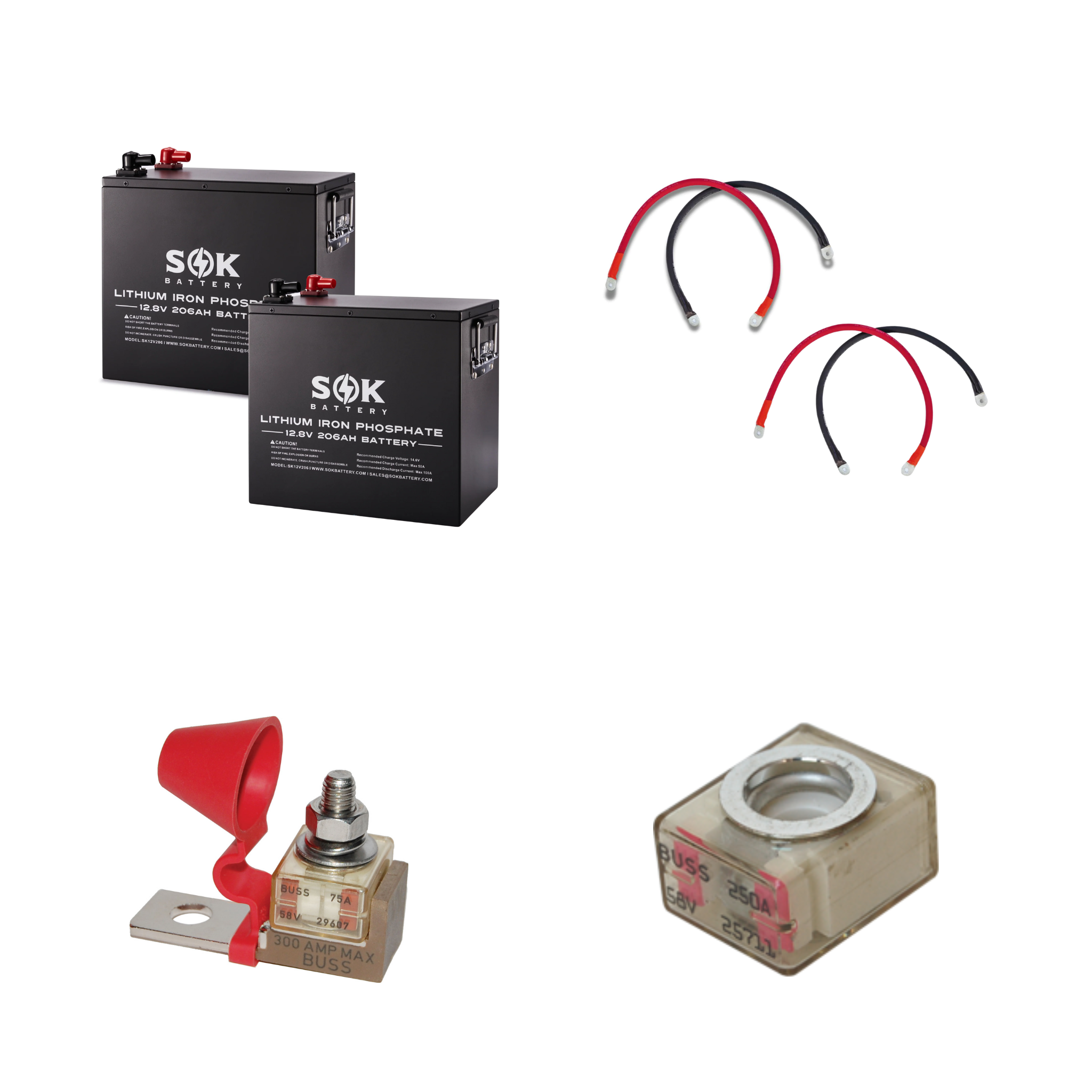Power Systems Showdown: Victron vs. EcoFlow - What's Right for Your Van?
Whether you're setting up your first power system or considering an upgrade, choosing the right setup is crucial. Let's break down the pros and cons of these two popular power systems to help you make the best decision for your adventures.

THE BASICS: SEPARATE OR ALL-IN-ONE?
Victron: Imagine building your own power system like creating a custom burrito. Victron offers separate components for everything you need—an inverter/charger, solar charger, alternator charger, monitoring system, distribution, fusing, and switching. This approach is perfect if you love hands-on customization, but it can get a bit chaotic if you're not into the nitty-gritty of wiring.
EcoFlow: On the other side, EcoFlow presents a more streamlined solution. Think of it as the all-in-one power hub—the Swiss Army knife of campervan power systems. Everything is integrated into a single, neat unit. Less to worry about, and it’s an attractive option if you prefer a simpler setup with less fuss.
BATTERY CAPACITY: SIZE MATTERS
Victron: From a modest 100 amp hours to a massive 1,000+ amp hours, Victron offers a wide range of battery capacities. Whether you need a small snack or a full feast of power, Victron's flexibility stands out.
EcoFlow: Offers fixed battery sizes, ranging from a manageable 2 kWh to a robust 15 kWh. While it may not have the same flexibility, EcoFlow’s options are still substantial and capable of powering your needs.
Winner: Victron takes the crown for flexibility. More options than a fast food menu!
INSTALLATION DIFFICULTY
Victron: If you’re the type who nerds out over Ohm's law and can't stop talking about their favourite online wire size calculator (this is mine btw), then this might be your jam. But fair warning: wiring it up requires courage, specialty tools, and maybe a stress ball. 🛠️
EcoFlow: This is the plug-and-play solution. With EcoFlow, installation is straightforward—just set it up and go. Even if you're not tech-savvy, EcoFlow’s design makes it easy to get started. Just pop it in, and you’re good to go. Even your grandma could do it.
Winner: EcoFlow, hands down, for its ease of installation.
MONITORING: HOW FANCY DO YOU WANT TO GET?
Victron: Offers a range of monitoring options from basic Bluetooth apps to the high-end Cerbo touch screen. The Cerbo even tracks water tanks, adding an extra layer of convenience.
EcoFlow: Features monitoring with a twist—you can control multiple DC circuits directly from the app or touch screen, eliminating the need for physical switches. It also includes built-in remote monitoring, which isn’t always standard with Victron setups.
Winner: EcoFlow edges out slightly for its advanced circuit switching capabilities.
INVERTER SIZE: CAN I HANDLE YOUR TOYS?
Victron: Options galore—from 500W up to a beastly 3000W.
EcoFlow: A single, no-nonsense 3,600W inverter that peaks at 7,200W.
Winner: Tie! Both can juice up whatever you’ve got in your campervan.
ALTERNATOR CHARGING: GETTING JUICED ON THE GO
Victron: Most common options are 30a or 50a DC/DC chargers. Want more power? Get ready for some serious upgrades (and maybe a loan).
EcoFlow: Comes with a stock 60A to 70A alternator charger, which is adjustable via the app. It’s fast, flexible, and efficient just the way we like it.
Winner: EcoFlow for that high-octane charge.
SPACE: LESS IS MORE?
Victron: Smaller components, but you’ll need a whole lot more of them. It’s like playing Tetris with your van.
EcoFlow: Compact and efficient. Takes up less space but offers less wiggle room for placement.
Winner: It’s a tie—Victron for flexibility, EcoFlow for space-saving.
AND NOW... THE PRICE TAG!
Alright, let’s talk dollars and cents. It’s not exactly comparing apples to apples, but here’s a rough estimate:
Victron: 400Ah batteries, 3000W inverter, 50a solar charger, 30a DC/DC charger, Cerbo GX monitor = Around $6,000 USD / $8300 CAD.
EcoFlow: 5kWh battery (~384Ah) with 3600W inverter, 100a solar charging, 70a DC/DC charging, and the touch screen monitoring = Around $6,500 USD / $9000 CAD.
Winner: Victron by a hair, but let’s be real—both are investments in power goodness.
SO, WHO'S THE WINNER?
Drumroll, please… 🥁 The scorecard’s in, and it’s 3-2 for EcoFlow. But here’s the kicker—it all depends on your needs.
Are you ready to become a 12-volt Jedi? Go Victron.
Need something custom? Victron’s your go-to.
Want to hit the road ASAP without getting an engineering degree? EcoFlow, all the way.
Does this power talk make your head spin? EcoFlow to the rescue.
Paying for installation? EcoFlow’s installation costs will be significantly less.




